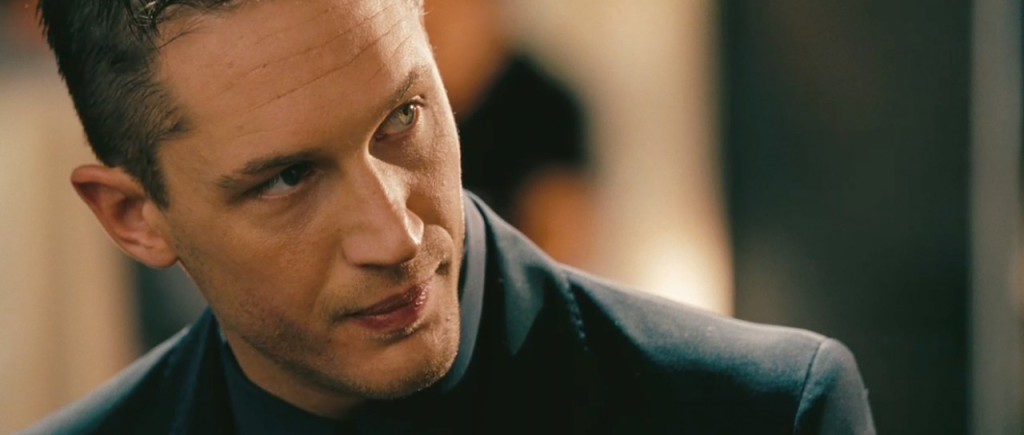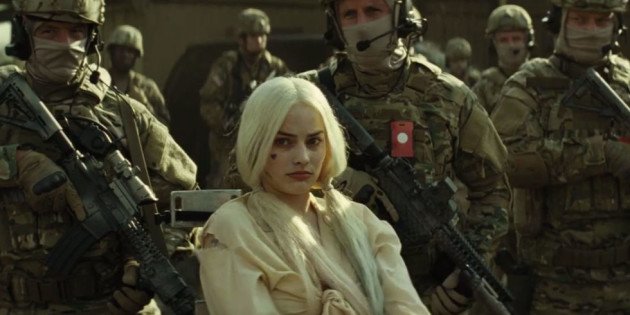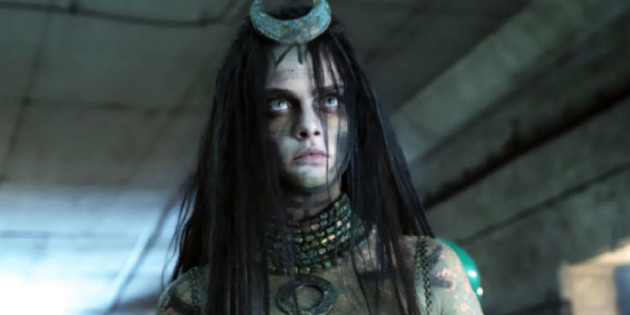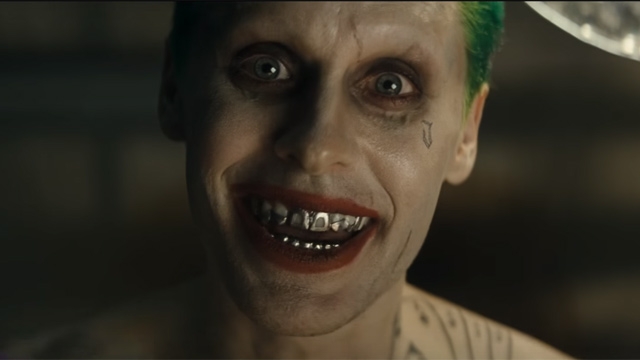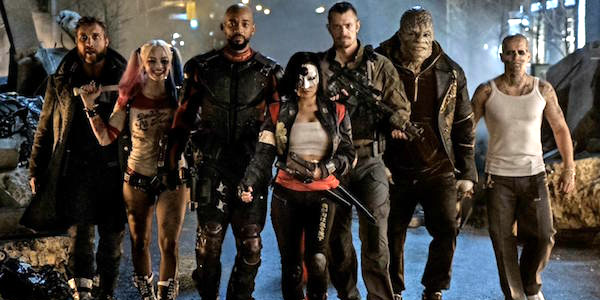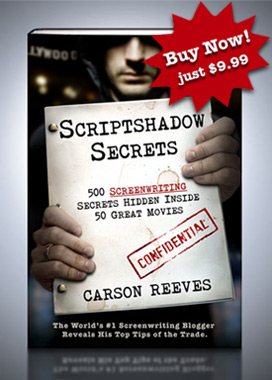Genre: Spy/Action
Premise: Years after a psychotic spy is kicked out of his agency, he’s pulled back in to complete a top secret mission.
About: This script comes from Wanted writers Michael Brandt and Derek Haas. You might be wondering where these two disappeared to after Wanted. After a couple of slow years, they developed Chicago Fire, which led to Chicago P.D., which led to Chicago Med, which is now leading to Chicago Justice. The funny thing is, when all was said and done, I’d be surprised if Brandt and Haas cleared 750k for their work on Wanted. But when you have a network TV show? CHA-CHING! When you have two? BA-BING! When you have three??? RA-RINNNNGGG! And if you have four, forget about it. You can afford a 2 bedroom apartment in San Francisco. TV is where writers make money, guys. It’s the sad truth us feature lovers hate to admit. Matt Helm is born out of a series of spy novels of the same name. In the 1960s and 70s, four films were made based on the books, but bore zero resemblance to them, since the filmmakers didn’t think they could compete with Bond. So a more tongue-in-cheek style was created, with Dean Martin starring. In 2002, Dreamworks purchased the rights to Matt Helm, and that’s the iteration that today’s script is based on. When Dreamworks left Paramount, Paramount kept the rights to Helm, at which point Spielberg himself flirted with the series. But he ultimately passed and the franchise is still stuck in development hell.
Writers: Michael Brandt & Derek Haas (based on the Matt Helm novel, “Death of a Citizen” by Donald Hamilton)
Details: 108 pages (10/07/06 draft)
One of the bankable arenas for a spec writer is the Agent and/or Spy spec. Hollywood is always looking for the next Jason Bourne. In fact, a “Female Bourne” spec just sold last week, called Red Widow.
If you’re interested in this, there are a couple of ways to go about it. First, there are a million of these book series to option. Don’t worry if they’re 10 years old, 20, 50. All Hollywood cares about is if they were once published somewhere and more than a hundred people have heard about them. Some of the older stuff shouldn’t be tough to get an option on. And lots of writers who’ve secured options on book material have told me they didn’t think it would be as easy as it was. It never hurts to ask, guys!
If you want to go spec script, then you have to find a new twist to the spy thing. Because Hollywood is more risk averse when it comes to specs. It takes that fresh angle to get their wallets horny. I’m a little sad that all Red Widow had to do was change the part from male to female, but hey, it’s the trend right now, and good job to the writer for capitalizing on it.
On to today’s script…
Matt Helm loves his job. Sure, he’s a little bit nuts and takes anti-psychotic meds, but he’s so good at what he does, the agency looks past it. That is until Helm fingers and kills the wrong mark, resulting in his prickly boss “reassigning” him to the suburbs. Subtext? “Don’t call us, we’ll call you.”
It takes another three years for a now stir-crazy Helm to get the call again. A trio of scientists have created a scary ass explosive called a “spider-bomb.” I could go into details, but let’s just say, like most bombs, it’s something you don’t want to be around when it blows up.
The agency believes that our scientists are going to sell Charlotte’s Web on the black market within the next few days, and need Helm to do his thing before that happens. Helm is paired with his former co-worker and former sex-partner, Tina, who will be in charge of the mission.
For some reason, Helm takes five random items into each mission, each of which are seemingly mundane, but in Helm’s hands, tools that can be unleashed to do the unthinkable. Helm is so damn good, that he easily takes care of 2 of the first 3 bad guys.
But while looking for the third spiderman, poor Helm has another one of his psychotic episodes, and becomes convinced that an ordinary woman is his mark. Terrified, Tina tries to stop him from killing her, but Helm is positive she’s a baddie. This results in the most intense scene in the script, with Helm, Tina, and us, wondering if this chick is, indeed, out to get him.
The fallout from this moment changes the entire complexion of the movie, and Helm will find that both his life, and his sanity, are officially on the line.
Let me ask you a question. And feel free to answer in the comments section. If someone were to pay you to come up with a spy franchise, what would you bring to the table to make it different?
Matt Helm goes with a psychotic agent. I like that angle, which I’ll talk about more in a second. But think about how many options you have. You can make the agent really young, desperate to prove himself. You can make him older, out of touch with the way the game works these days. You can make him a family man. You can get weird and have your agency based on a secret society that’s been around for centuries (Kingsman, Wanted). But the point is, you have to do something unique.
Like I said, Matt Helm went with psycho. Which was a sweet angle. Imagine Martin Riggs (Lethal Weapon) as a secret agent. That’s a movie right there.
But Matt Helm made the mistake that so many writers have made before it. They TOLD us Helm was crazy a bunch of times, but they didn’t SHOW us Helm was crazy a bunch of times. And telling never works. You can have a character tell us “Gary is funny” 75 times in a row. But if Gary never makes us laugh, Gary’s not funny.
It sucks because Helm’s best scene is that late scene with the woman where he isn’t sure if she’s bad or good since he’s going nuts. But that’s on page 70. Up until that point, we’re mostly told Helm is psychotic, with our primary visual reminder being Helm taking his medication.
You want to watch someone SHOW and not TELL us they’re crazy? Go watch The Joker in Suicide Squad. A good way to gauge if you’re doing the show and don’t tell thing is to ask, if none of your characters ever stated that your hero was crazy (or whatever it is you’re trying to get across), would the audience still leave the theater going, “Holy shit, that dude was crazy!”
The “Five Items” thing didn’t work either. The ways in which the items were used was uninspiring. This is another mistake I see all the time. Writers paint themselves into these corners with these rules, then they don’t deliver on them. So if your hero’s thing is that he cleverly uses 5 items on every mission, then his use of those items better live up to the hype.
It’s like the Boomerang Guy in Suicide Squad. We’re told he was able to do things with a boomerang that would make a nuclear missile look like a pop rock. Except all I saw him do was throw a boomerang and watch it come back to him. Mogli the Wolf Boy from Mad Max had more impressive boomerang skills than Captain Kangaroo.
This may sound like I didn’t like Matt Helm. But actually, despite being a tad predictable, I thought the writing itself was awesome. Brandt and Haas are super-enjoyable to read. They strike the perfect balance between crisp minimalistic action lines and the occasional chunkster paragraph required to feed the reader a lot of info.
And the character of Helm himself was fun. Not as fun as he could’ve been had they gone Full Nutzos, but fun nonetheless.
If I were them, I’d go full-tilt into this psychotic secret agent idea. We’ve never seen anything like that before, and that’s the only reason to get into this genre – if you’ve got something fresh. We’ll see if Matt Helm ever climbs out of development hell and gets a chance to prove itself. Jason Bourne is done, right? So there’s an open locker in the locker room.
[ ] What the hell did I just read?
[ ] wasn’t for me
[x] worth the read
[ ] impressive
[ ] genius
What I learned: Repeated “show don’t tell” shots of pills don’t sell the condition your character is suffering from. Whether it’s depression, anxiety, bipolar disorder, being psychotic – if you want to sell us that the character is suffering from these things, we must SEE THEM SUFFERING FROM THESE THINGS. Shots of them staring at the pills is NOT a “show don’t tell” moment. It’s more like a visual “tell.” Not nearly as effective.
Genre: Superhero
Premise: A rag-tag team of super-villains are released from prison to help the military destroy a powerful witch who has taken over the city.
About: What originally began as a secondary project in DC’s plans to do what Marvel’s done, got called up to the big leagues when Batman vs. Superman didn’t do well and Suicide Squad’s first trailer generated a ton of unexpected heat. All of a sudden, DC considered Squad its top priority, and since then, just about everything that could’ve happened with the project did happen. The film had already been rushed into production from the start (they gave writer-director David Ayer only six weeks to write the script). And now the first cut was considered too serious, a common complaint with Batman vs. Superman. So they rushed into reshoots that would focus on adding more humor, all of which was denied by Ayer, DC, and Warner Brothers. Meanwhile, two separate cuts of the movie were being edited – one serious, one funny, and were later screened for audiences to see which tested better. Funny won and Ayer’s serious take was deep-sixed. Ayer seems to have learned from his predecessors though. Instead of throwing the film under the bus like Josh Trank did for Fantastic Four and Joss Whedon did for Avengers 2, Ayer has proudly claimed that he loves the movie. The film debuted this weekend to 135 million dollars, which is either really high (it’s the highest ever opening in August) or really low (it was projected to hit 150 million) depending on who you talk to. For reference, Batman vs. Superman, which consisted of the two best known superheroes in history, opened with 166 million.
Writer: David Ayer
Details: 120 minutes
Six weeks.
SIX WEEKS!
Remember that time when I gave you guys four months to write a script and most of you said it was impossible and I was moving way too fast and that you NEEDED MORE TIME. Well imagine someone telling you that you had six weeks to write a 180 million dollar movie. Oh, and by the way. It wasn’t some simple narrative that followed a superhero’s origin story.
No. It was an ENSEMBLE PIECE of brand new characters that hadn’t been seen on the big screen before. So you were going to have to introduce each of them, make us understand and care about them within a couple of minutes, and, while you were doing this, create a plot that would offer these characters something important to do.
When you consider all that? I think David Ayer did a damn good job.
I mean, from the way people were talking about this movie, I thought I was walking into Transformers 4 or Pan. This was a solid, albeit rushed superhero movie that felt different enough from the usual suspects, that it left me feeling like I’d spent my money well.
Now before you go all, “But Carson. It doesn’t do all these things that you tell us to do. Why are you giving it a pass?” Believe me, I’m aware of the things it does badly. But the combination of zero expectations and knowing they wrote a script in six weeks (SIX WEEKS!), left me actually impressed that they came up with something comprehensible at all.
This is something I tell you guys. Get ready for how it really is in the big leagues. Cause a time like this WILL happen to you, where someone asks you to write a script in six weeks, or four, or two, or ten days. I’ve heard it happen before. If you don’t have a game plan down for how to approach that problem, say goodbye to some potentially lucrative jobs.
For those who didn’t see the film, here’s the Five Tweets plot-breakdown. An extremely powerful witch tries to take over the city. They recruit super-villains from prison to stop her, the key players of whom are Deadshot, Harley Quinn, and firestarter, Diablo. They’re led by Sergeant Rick Flag, who happens to be in love with the woman who the witch has possessed. Oh, and while they go after the witch, the Joker, who’s Harley Quinn’s boyfriend, attempts to get her back.
The rushed-ness of the script is felt almost immediately.
They give us an introductory scene for both Deadshot and Harley Quinn. They then do one of those dossier montages where a woman runs down each of the villains, while we see them in action, giving us a SECOND introductory scene for both Deadshot and Harley Quinn. Finally, before the mission begins, we get a THIRD introductory scene for Deadshot.
Look, we can hurl hate from our ivory towers all we want. But I’ve heard how some of these high level 15 producers sitting at a table with the studio head and a dozen executives, all of whom’s jobs depend on this movie, each giving opinions on what they think needs to be in the film, go. And I can only imagine the level of conflicting notes that come out of those meetings.
I can totally see a conversation that went something like: “But that Will Smith target practice scene is awesome!” “Well yeah, but we’ve already set up his character, um, twice.” “I don’t care. I love that scene. Put it in there.” “You’re the boss.”
Truth be told, the majority of the problems in this movie are problems that could’ve been fixed with time. For example, one of your best characters, The Joker, isn’t even part of the main plot. Why isn’t he a part of the Suicide Squad?
Then you realize, well, the Joker doesn’t have any powers. So it wouldn’t make sense for them to recruit him. Not only that, but he’s so big, he would overshadow everyone in the group. Who cares about Boomerang Guy or Katana Chick when the Joker is chewing up the scenery? Hence why they give him this subplot where he’s away from everyone else. But I’m sure with three or four drafts, you’d figure out a way to make him a bigger part of the story.
The lack of time also hurt the character creation. This is where time truly haunts the process. Because you can always cobble together a giant problem and a goal for characters to tackle. But making characters memorable and giving them something interesting going on is a whole other ball of wax.
I mean someone tell me what Croc did in this film. He’s the coolest-looking character of the bunch and he does absolutely nothing. Ditto Boomerang Guy, who’s relegated to an exaggerated Aussie accent and a boomerang that does the same thing a $19.99 drone from Toys R Us can do. And as much time as they spent on Deadshot, his entire character amounts to, “I’M DOING THIS FOR MY DAUGHTER” in big giant capital letters.
And again, I’m not blaming the lack of ability. I’m blaming the lack of time. Creating nuanced characters in an ENSEMBLE where you have a fraction of the time you’d have in a traditional single-hero film is hard. It takes a lot of trial and error.
But you could see Ayer trying. The choice to make Rick Flag and the Witch in love, so that destroying the witch meant destroying the love of his life – that’s the kind of the thing you want to do in screenplays. You want to make it personal. It was executed clumsily in a first-draftish way, but the intention was good.
And we did have a clear goal driving the story. We knew what we were after, which kept the journey focused.
I could’ve personally done without the witch-as-major-villain choice. I think witches belong in a separate universe from superheroes, which is why I never took to the witch character in the Avengers either. Then again, I don’t know how they come up with any villains in these superhero movies, since they have to construct something that is somehow more powerful than all of the most powerful superheroes combined.
It all feels so convoluted.
Is it any wonder why the two most popular villains in history (Lex Luthor and The Joker) have no powers?
That’s one of Nolan’s secrets to success. By eliminating anyone with ridiculous super powers, he didn’t have to come up with some silly villain who could blow up the planet with a wiggle of his left toe.
Is Suicide Squad great? It is not. But it’s not nearly as bad as people are saying it is. It’s DEFINITELY better than Batman vs. Superman, I can promise you that.
But I will say that if DC doesn’t put a better plan in place, they’re fucked. You can’t throw scripts together in six weeks and expect miracles. The key to Marvel’s success was that they mapped out a plan ahead of time, which gave projects the organic time to grow that they needed. In the few times that they rushed (Iron Man 2, Avengers 2), they paid the price. Then again, when has Hollywood ever listened to that advice? They keep making the same mistake again and again. Kind of like being told again and again that the reason we’re on this mission is because, “I’m gonna see my daughter!!!”
[ ] What the hell did I just watch?
[ ] wasn’t for me
[x] worth the price of admission
[ ] impressive
[ ] genius
What I learned: Bad guys forced to do good things is a formula that audiences enjoy. It’s no surprise why three of the biggest surprise properties of the last few years have been: “Guardians of the Galaxy,” “Deadpool,” and “Suicide Squad.” Audiences love that setup.
Before we get to today’s scripts, I just want to alert all you aspiring writers out there of a yucky trend I’ve been encountering in the logline department: Loglines without a single original element in them. Here’s an example: “When a small town is terrorized by a ruthless outlaw and his gang, two out-of-towners decide to wage war against the outlaws. Will the townsfolk support them, or will it be two vs. an army?” This is every single Western ever. There isn’t a single unique element in the logline. If you don’t have an original or unique element (and preferably, you’ll have more than one), then you probably want to find another idea. I hope that helps. Onto today’s challengers!
Title: The Hunting Party
Genre: Sci-Fi/Horror
Logline: Long after Earth has been overrun by a hostile alien organism, a human orphan (raised by interstellar trophy hunters) crosses paths with a team of mercenaries sent to unleash a doomsday device and reclaim their home world.
Why You Should Read: When I was a young boy, there was this school bully who tormented me, constantly. I was so terrified at the thought of what was going to happen, what I knew would happen, that I started developing a cold sweat on the way to the one class we shared. The very same elective class that my parents would not let me drop because it would be a disservice to my potential as a musician. Needless to say, I am not a musician. So those years of gripping terror did little for my profession, and even less for my character, as I now spasm at the sound of an off-key trumpet.
For some inebriated reason, I decided to look that old classmate up a few years ago, only to discover he’d passed away. He was in his early thirties, had a wife and daughter. Left them without much as he never surpassed a menial day job. From what I could find out, he’d spent his few remaining years in the hospital suffering from some sort of terrible illness, though I’m not sure on the specifics. They tend not to go into much detail in the obits, especially when it might turn off a bereaved family member. Anyway, the point is, good things do happen to good people, if you’re willing to be patient and invest the time.
Well, here I am, another script in hand. This one in particular is an oddity, as I’ve never tried adapting material before. You’ll most likely figure out the source material very quickly, so I won’t go into what sparked my inspiration, other than I think the previous attempts were lacking. And I think it’s about time you did a round of “Amateur Friday Unauthorized Adaptations”. What do you think?
Title: Cry Baby Creek
Genre: Horror (non gore)
Logline: A woman investigating a fatal accident finds more than she bargained for when she starts asking questions about the dead woman who haunts the local creek. Some people in the small southern town would rather she not find the answers.
Why should you review my script: It’s a non gore horror that has more to do with the people than the ghost (she’s not actually a ghost so there’s not really anything paranormal or lengthy explanations about how she exists or anything like that…she just, well, does). Nobody actually dies (except the kid at the beginning, but she doesn’t kill him even though she’s there). So it’s not the average horror thing…it’s character driven. More of a story about family relationships and racial tension than the dead woman (although the dead woman figures prominently in the relationships of the main characters). There’s the typical twist ending and the creepy thing in the distance cliches, but how else am I gonna attract the attention of low budget people who want to sell DVD’s to Netflix? It was optioned for a year but the studio got delayed on a project ahead of it so they ended up passing on it. My mom liked it. But my mom also told me I could be anything I wanted to be which was apparently an IT guy at a machine shop. Can’t count the lunchboxes I had with that on it.
Title: A Wretch Like Me
Genre: Revenge Thriller
Logline: After helping a damsel in distress, a heinous drug smuggler misses a drop, forcing him on a brutal path to fight for his survival.
Why you should read: As a writer, I have been pretty beaten down lately. This screenplay was featured by Carson as one of the “10 that almost made the top 25” of the Scriptshadow 250 contest. That’s something writers love to hear. You are almost good enough, but not quite ready to eat at the adult’s table. I think this screenplay is solid, but I want it to shine. It is simple, straight forward, and brutal as hell. It is Mad Max meets John Wick. Most readers have cringed while going through it.
The goal of my main character was to mimic what Stan Lee did with the creation of Tony Stark/Iron Man. To quote Lee, “I thought it would be fun to take the kind of character that nobody would like, none of our readers would like, and shove him down their throats and make them like him.”
In A Wretch Like Me, the main character starts as the worst possible human, and by the end, he is a hero you can cheer for. Carson stated that he was almost too vile for salvation. So my question is: Does he need to be less vile, or given a more heroic arc…? Or maybe I’m missing the bigger picture entirely.
Title: Phobosia
Genre: Horror
Logline: After the sudden death of his mother, an anxiety-ridden young man on the cusp of a major life decision discovers that the only way he can survive his unrelenting fear is to kill ‘Terror’ itself.
Why You Should Read: I think the horror genre has been a little underserved of late. Many of the best classic horror movies use the genre to delve into really rich themes, and to tell stories that are both entertaining and meaningful (like ‘Rosemary’s Baby’ or ‘The Devil’s Backbone’). But it feels like more recently horror has drifted towards cheaper, jump-scary territory. And I really don’t mean to knock modern horror films – people still love them and there have been some great recent offerings, like ‘The Babadook’ – but I can’t help but feel that horror can be so much more.
Phobosia is my attempt at translating deeply personal subject matter into a script that is, hopefully, entertaining, character-driven, and dramatically rewarding. Have I succeeded? No idea! But that’s why I’d love to get feedback from the always honest and on point Scriptshadow community. I hope you’ll be interested in giving it a read, and if you do thanks so much in advance for your time!
Title: Castle Doctrine
Genre: Crime Thriller
Logline: When a Minnesota homeowner exploits the state’s self-defense law to get away with the murder of two teenage girls, their parents start looking for various hitmen to break into his fortified safehouse and kill him.
Why you should read: “Castle Doctrine” is a topsy-turvy “Fargo”-esque small-town thriller that plays around with some of the genre conventions (who’s the hitman, and who’s the prey) while at the same time respecting the classic noir formula.
It takes place in 2016 and shows modern Minnesota in the grip of high-speed Internet and social media. Its “richest man in town” character may have made his fortune in startups while its “vengeful mother” archetype may run an Etsy crafting shop out of her house and hire her hitmen online. It even may take place in the nice little township I was born and raised in, and not in the usual backwoods sort of place.
But it portrays (unflinchingly, I hope) the downward spiral of a community destroyed by a particular kind of crime where EVERYBODY knows who the killer is, but NO ONE has the guts (or the means) to do something about it. It chronicles the last days of several individuals who live out their lives thinking of either murder or survival and not much else. Its plot driver is the pendulum of retribution, the one you draw back in the first act, let fly in the second and watch it bring about a 24-hour bacchanalia of blood and mayhem in the violence-steeped third.
It doesn’t get any more noir than that.
Hey guys, I’m a little overwhelmed with work at the moment. Today’s review of “Fool” will have to be moved to next Friday. Feel free to discuss the impending behemoth that is Suicide Squad at the box office this weekend. I’m so bummed that it’s getting horrible reviews as I was really looking forward to this. DC and Warners don’t seem to know what they’re doing. Which is strange, since they’re the ones hiring the big name directors whereas Marvel is just punching these nobodies into the chair and coming up with much better films. Are the Marvel characters just more suited for cinema? Is it strictly a tonal miscalculation. I don’t know. But I’ll be reviewing Suicide Squad come Monday. See ya then!
If you’ve listened to me babble on this site for any length of time, you know that the most important component I value in screenwriting is SIMPLICITY. The simpler the setup and the plot, the cleaner and more impactful your movie is going to be. The Terminator. The Martian. Indiana Jones. One character, one goal, one easy to follow story. I’ll never stop trumpeting that simplicity is the essential ingredient to good storytelling. That doesn’t mean you can’t have complexity in your script, but instead of exploring it through the plotting, you explore it in your characters.
However, it’s occurred to me over the last five years that the Hollywood landscape – specifically the big budget landscape – is shifting away from that. The movies are getting bigger, and with them the character count. From this week’s Suicide Squad to Avengers to X-Men to Star Wars to Guardians of the Galaxy to Fast and Furious to Now You See Me to Bridesmaids. A new emphasis has been placed on multiple character through-lines.
Now here’s something you might’ve noticed with the rise of these films. THEY’RE NOT AS GOOD. Sure, you get a good one every once in awhile. But most of the time they get lost in the muck of too many characters trying to do too many damn things. Consider this. If you have a six-character cross-cutting ensemble, that means that each of your characters is going to have around 20-25 minutes to complete their entire character arc.
This is why studio ensembles have 2 and a half to 3 hour running times. They think that if they just extend the running time and give each character more time that way, it’ll be the best of both worlds. But the big bloated running times add a new problem – they slow the fucking pace down. And there’s nothing that pisses an audience off more than a slow movie.
However, there’s no doubt that if you’re a screenwriter who wants to play in the sandbox that is today’s Hollywood, you need to be able to write ensembles. This is becoming a necessary skill. So how do you do it? I’m going to tell you how. Now you may say to yourself, “Well so-and-so comic book movie didn’t do that, Carson,” or “That space opera movie didn’t do that, Car-boy.” Yeah, that’s because 99% of screenwriters don’t know how to write an ensemble. They’re just making up shit as they go along. Here’s how you approach an ensemble and actually end up with something good.
1) Have a main character – When you think of “ensemble,” you think that every character should have an equal amount of screen time and plot contribution. That’s not necessarily true. There should be one character the film is still centered around. Your Starloard, your Luke Skywalker, your Kristin Wiig in Bridesmaids. These movies jump around a lot. You need someone to keep coming back to to center the story. If you have five main characters, one should take up 30% of the movie, while the other four should take up 15% each. The percentages will differ depending on your story, of course, but that’s a good way to look at it.
2) For the love of all that is holy, keep the plot simple! – Here’s where most Hollywood movies screw this up. They think: Big movie, big plot!! No. Look no further than the lumbering Batman vs. Superman or the majority of the Pirates movies to see how this backfires. You’ve already got a bunch of characters we need to keep track of. Why make things even harder on the viewer by adding some big complicated plot? The solution is to do the opposite. Make the plot as simple as you can. Look at the Toy Story movies for this. The goals are very simple: “Rescue someone.” Or “Escape.” Or look at Now You See Me. We’re robbing banks. It’s a very clean setup, which actually allows us to enjoy the characters, since we’re not wasting 70% of your brain energy trying to figure out what the hell is going on.
3) The MacGuffin is your friend – A MacGuffin is the one thing that everybody in your story is after and is basically designed for ensemble movies. You see, one of the problems with ensembles is that it’s easy to forget what each individual character is trying to achieve. An ensemble eradicates that problem since every character is chasing the same thing. This is why the original Star Wars works so well. Everyone is chasing R2-D2, who has the stolen plans to the Death Star. If a simple plot isn’t an option, I strongly suggest you use a MacGuffin.
4) More focus on strong clear objectives – Let’s say you follow a scene with Character A with a 4 minute scene from Character B, a 3 minute scene from Character C, and a 5 minute scene from Character D, before coming back to Character A. 12 minutes and 3 character threads have just elapsed since now and the last time we saw Character A. Can you be sure that the audience will remember what was going on with Character A? No. For this reason, when you’re doing ensembles, it’s essential that each character’s mission or goal or current pursuit is STRONG and it is CLEAR. If it isn’t, we’ll forget what they’re trying to accomplish and be bored the second they come back (“Not this wandering idiot again.”). Remember the Lois Lane bullet search thread in Batman vs. Superman? How unimportant it felt? That’s an example of a weak pursuit. Does anybody know what half the robots are doing in the Transformers movies? That’s an example of an UNCLEAR pursuit. You can’t afford to have either in an ensemble.
5) Keep the writing as clean and as sparse as possible – Finally guys, go back to Screenwriting 101 to get ensembles right. Super clean writing with NO EXCESS fat. You’re asking the audience to keep track of five or six different story threads. That’s a lot to ask. To make that easier on them, get rid of any characters you don’t absolutely need, get rid of any scenes you don’t absolutely need. Cut all of your existing scenes down to only what you need to make them work. With an ensemble, you can’t have anything that distracts. This is why Star Wars still holds up to this day. It doesn’t have a single unnecessary moment.
Okay guys, what I can’t do for you is tell you how to handle a producer who tells you you need to add Captain Zorkaspian to your movie three months before its release because the studio has decided to do a spin-off film with him in 2024 and “Marketing” says it’s best to hype him early. But what I can do is help you write a clean ensemble script. Main character, simple plot or Macguffin, strong and clear character objectives, writing as clean as possible. Now go forth with this knowledge and write the next average super-hero movie!

